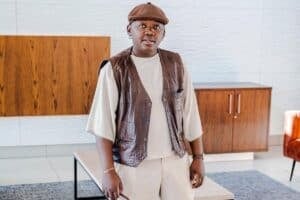Dance used to be something twee couples took classes for.

Then it became the alternative focal point for TV game and reality shows. Now it’s at the core of a theatrical phenomenon.
What’s the attraction? Most of the moves unveiled on screen or stage are beyond their audience’s capabilities, but perhaps it’s more immediate than acting?
“Dance is a natural pleasure; a rite; a need,” says co-producer of Brazouka, Pamela Stephenson-Connolly, herself a veteran of the BBC’s Strictly Come Dancing.
“There are a number of reasons to do it: to celebrate; to announce a war or a victory; as foreplay or to express something. I think Europeans have moved further and further away from that. Cultures such as those found in Brazil or Africa are more natural about such things – there’s no separation between art and life.”

TEAM. Left to right, Gilson Damasco, Natasha Terekhina, Pamela Stephenson Connolly, Josy Borges and Braz Dos Santos. Pictures: Supplied
Stephenson-Connolly recalls an experience she had while researching Brazouka.
“I was on a beach, watching people dance to axé [an Afro-Brazilian music genre]. They were doing it under a canopy, building up a sweat and then getting hosed down. They were enjoying getting fit and having fun – people of all shapes, and ages, and with a drag queen leading the session!”
That fuelled Stephenson-Connolly’s desire to create a new, original dance show.
“I loved being involved with Strictly, but I couldn’t continue at that level,” she says.
“I had polio as a youngster, and signed up to ballet as a way of helping to deal with that. And I dance a lot with Billy [Connolly, the Scottish comedian and actor]. He’s trying to teach me to jive.”
Making Brazouka a fresh experience for audiences jaded by a succession of variations on Irish and ballroom dancing meant doing a fair bit of background work.
“When I was in Brazil, I discovered lambazouk, which is a development of the lambada danced to zouk music from Africa via the Caribbean,” she says.
“It has this incredible lyricism, grace and abandonment and it’s an up-and-coming social dance – it may overtake salsa in popularity. And importantly, I hadn’t seen it elsewhere on stage.”
Some of the publicity material for Brazouka includes phrases such as “ridiculously beautiful”, “evocatively lit” and “sensual”. That sounds like a fantasy – fake but desirable. How important is the titillation factor when it comes to bringing in audiences?
Stephenson-Connolly laughs.
“We have people coming back three times, booking seats closer to the front each time,” she says.
“But there’s more to the show than the sexiness. The story is historically accurate. We show the evolution of the different dances. We had to make some decisions – do we tone down the lambada, for instance? You know, though, that people can go and see these dances on YouTube, so it’s better to keep it real.”
Brazouka is also the story of dancer Braz dos Santos, the show’s protagonist and narrator.
“It’s a dramatic story,” says Stephenson-Connolly.
“He had family problems and was involved in child labour. He ended up following older men to bordellos and learning the lambada there. The dance then became mainstream, leading Braz’s father to pull his daughter out of clubs to ‘protect’ her. He tolerated Braz doing it because he was winning competitions and bringing in money.”
Info:
> Brazouka runs at the Mandela at the Joburg Theatre from October 3 to 19.
> Johannesburg is the first stop on the piece’s world tour.
> Tickets start at R180 each. Book at joburgtheatre.com









